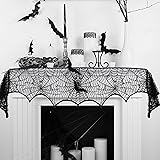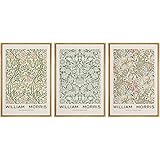Illuminate Your Space: Expert Interior Design Lighting Tips for a Brilliant Home
Did you know that strategic lighting can increase a home’s perceived value by up to 12% and significantly enhance daily mood and productivity? As highlighted in the insightful video above, mastering **interior design lighting tips** is not just about illuminating a room; it’s about crafting an experience, shaping ambiance, and elevating the very essence of your living space. Far too often, lighting becomes an afterthought, yet it stands as one of the most transformative elements in any home design. Let’s delve deeper into these essential strategies to ensure your home glows with both beauty and purpose, building upon the foundational advice shared.Layer Your Lighting Like a Pro: Ambient, Task, and Accent Illumination
The cornerstone of effective **home lighting design** lies in the art of layering. Imagine trying to create a rich musical piece with only one instrument; it falls flat. Similarly, a room lit by only a single overhead fixture lacks depth and versatility. As discussed, three distinct types of lighting work in concert to create a truly dynamic environment:
-
Ambient Lighting: The Foundation. This is your general illumination, designed to provide overall brightness to a space. It creates a comfortable, welcoming glow and often mimics natural daylight. Common examples include recessed lighting, ceiling-mounted fixtures like flush mounts or semi-flush mounts, and grand chandeliers. For optimal effect, ambient lighting should be evenly distributed, preventing dark corners that can make a room feel smaller or uninviting. The strategic placement of ambient sources is crucial; for instance, track lighting can offer directional ambient light, adjusting to changing furniture layouts or artwork.
-
Task Lighting: Illumination with Purpose. As the name suggests, task lighting is specifically aimed at assisting with particular activities. This could be a pendant light suspended over a kitchen island for chopping vegetables, a focused desk lamp in a home office, or a floor lamp beside a reading nook. The key here is directionality and intensity. Task lighting should be bright enough to prevent eye strain but not so harsh as to create glare. Furthermore, its placement needs to be precise, ensuring the light falls directly on the work surface without casting shadows from the user’s body.
-
Accent Lighting: The Artistic Touch. This is where you highlight specific features, drawing the eye to artwork, architectural details, or decorative objects. Think of it as painting with light. Examples include picture lights, narrow-beam spotlights, uplights for plants, or subtle LED strips integrated into shelving. Accent lighting adds drama and visual interest, elevating curated pieces and contributing significantly to the room’s character. Often, it accounts for a smaller percentage of the room’s total light, but its impact on aesthetics is profound, shaping focal points and creating a sense of depth.
Combining all three lighting types allows for incredible flexibility. You can adjust the mood of a room from brightly lit for cleaning or active tasks to a soft, intimate glow for relaxation or entertaining. The interplay of varying heights and locations for each light source further enhances this layered effect, preventing any “blank areas” and ensuring a visually rich atmosphere.
Extend Your Horizon: The Power of Outdoor Lighting for Interior Spaces
One often-overlooked yet incredibly effective **home lighting idea** is extending your lighting strategy beyond the interior walls. When night falls, and your outdoor space is unlit, it creates a “black wall” effect from inside, making your interior feel smaller and more confined. This psychological barrier can significantly impact how spacious and open your home feels, especially during colder months when outdoor activities are limited.
By thoughtfully illuminating your balcony, patio, or garden, you transform that dark barrier into a dynamic extension of your living space. Spotlights in planters can highlight foliage, wall sconces can define architectural lines, and string lights can add a festive, inviting glow. This clever use of outdoor lighting creates dimension and visual depth, tricking the eye into perceiving a world beyond your windows, expanding your perceived interior footprint by several feet. Beyond the aesthetic benefits, outdoor lighting also enhances safety and security, illuminating pathways and deterring potential intruders, adding practical value to your **interior lighting plan**.
Soften the Glow: The Art of Diffused Lighting
Consider the difference between direct sunlight and the soft, even light on a cloudy day. Photographers universally prefer diffused light for portraits because it minimizes harsh shadows and produces a more flattering, gentle illumination. This principle applies equally to your interiors.
Diffusing light involves scattering it to reduce glare and intensity, resulting in a softer, more uniform glow. This can be achieved through various means: light fixtures with frosted glass or fabric shades, lamps with internal diffusers, or even strategically placed screens. The benefits are multifold: diffused light is more flattering to people, making skin tones appear smoother and less stark. It also softens the appearance of objects and textures in the room, creating a more inviting and comfortable environment. While an exposed bulb might be desired for a specific industrial aesthetic, for general ambiance, opting for diffused light vastly improves the overall visual comfort and aesthetic appeal of your space, reducing visual noise and creating a serene atmosphere.
Embrace Modernity: The Versatility of Recessed LED Lighting Strips
For a contemporary, sophisticated look that truly sets a space apart, recessed LED lighting strips are an exceptional choice. The key is their discreet placement; when unseen, they emit a beautiful, soft glow that adds subtle dimension and a touch of luxury. Unlike the often garish, color-changing LED setups seen in gaming rooms, the focus here is on elegant, warm white light.
Imagine these strips subtly illuminating the underside of kitchen cabinets, highlighting a backsplash with a clean, continuous line of light. Picture them tucked beneath bathroom vanities, creating a spa-like glow. They can be integrated into shelving units to showcase collectibles, or even positioned behind mirrors or bed frames for an ethereal, ambient effect. This **modern lighting solution** creates a sophisticated, almost architectural glow that elevates the perceived quality of the space without any visible light source. The ability to control their intensity, often via smart home apps, further enhances their appeal, allowing you to fine-tune the ambiance effortlessly.
Harmonize Your Home: Matching Fixtures and Finishes
Achieving a cohesive and “designed” look in your home often comes down to thoughtful coordination, and your lighting fixtures are no exception. Rather than treating each light as an isolated element, integrate it into the broader material palette of your space. This means matching textures, materials, or colors of your lighting fixtures with other prominent elements in the room.
For example, if your kitchen features sleek matte black cabinet hardware or a matte black faucet, consider continuing this finish with matte black pendant lights or sconces. This repetition creates a visual thread that ties the room together, making it feel intentionally curated and harmonious. In a living room, a brass floor lamp can echo the brass hardware on a media console or the trim on a coffee table. This principle extends beyond metals; a rattan pendant light might beautifully complement a jute rug or a rattan accent chair, integrating natural textures throughout the space. By looking for opportunities to repeat finishes, whether it’s the polished chrome in a bathroom (shower stack, tub filler, faucet, accessories) or the natural wood grain across various pieces, you unify your **interior lighting design** with the overall aesthetic, resulting in a more polished and professional interior.
Master the Mood: The Indispensable Role of Dimmers
The ability to adjust the intensity of your lighting is a powerful tool for creating different moods and catering to various activities throughout the day. Dimmers are no longer the simple rotary dials of the past; modern LED-compatible dimmers offer seamless control, often integrated with smart home systems or sleek wall panels.
Consider the varied demands of a single room: bright light is essential for cleaning or intricate tasks, but a softer, warmer glow is ideal for an intimate dinner party or winding down in the evening. Dimmers provide this invaluable flexibility. Lowering the light level during social gatherings, for instance, fosters a more relaxed and inviting atmosphere, making guests feel more comfortable and the conversation more intimate. Beyond ambiance, dimmers can also contribute to energy efficiency, reducing power consumption when full brightness isn’t required. Investing in dimmers for your key light sources is a simple yet incredibly impactful upgrade to your **home lighting ideas**, offering unparalleled control over your environment.
Achieve Visual Consistency: The Importance of Color Temperature
One of the most critical, yet frequently overlooked, aspects of **interior design lighting tips** is maintaining a consistent color temperature. The “color” of light, measured in Kelvin (K), significantly impacts the perception of your space and everything within it. As noted, those glaring, cool white lights (often 4000K and above) are best reserved for offices or hospitals, where alertness is paramount. They create a sterile, harsh environment that is antithetical to a comfortable home.
For residential spaces, a warmer color temperature is generally preferred, typically ranging from 2700K to 3000K, which mimics the inviting glow of incandescent bulbs. This range emits a soft, yellowish-white light that promotes relaxation and makes a space feel cozy and welcoming. Some individuals might prefer a slightly brighter, more neutral white around 3500K to 4000K, which is often considered “daylight” and provides a crisp yet still comfortable illumination. The crucial takeaway is consistency: mixing widely different color temperatures within the same visual field will make your decor, paint colors, and even skin tones appear “off” and disjointed. A warm light next to a cool light can create an unsettling visual dissonance. Therefore, ensure all your light sources – ambient, task, and accent – align with your chosen color temperature for a cohesive, aesthetically pleasing, and harmonious **interior lighting plan**. Remember, save the harsh, bright white for the garage; your living spaces deserve a comforting, consistent glow.
For more detailed insights into common pitfalls and how to avoid them, be sure to check out the companion video on interior design lighting mistakes, which further elaborates on some of these crucial aspects of effective **home lighting design**.











